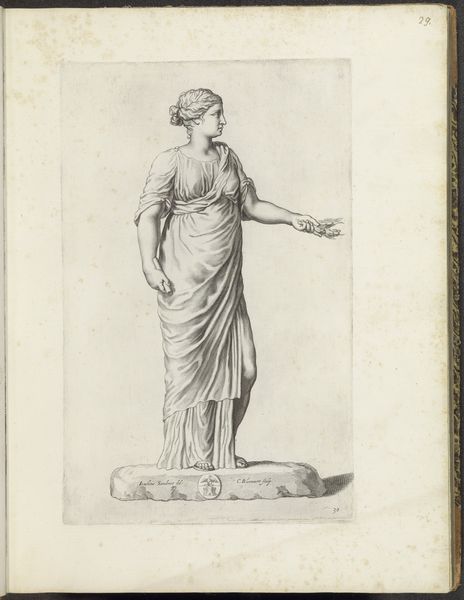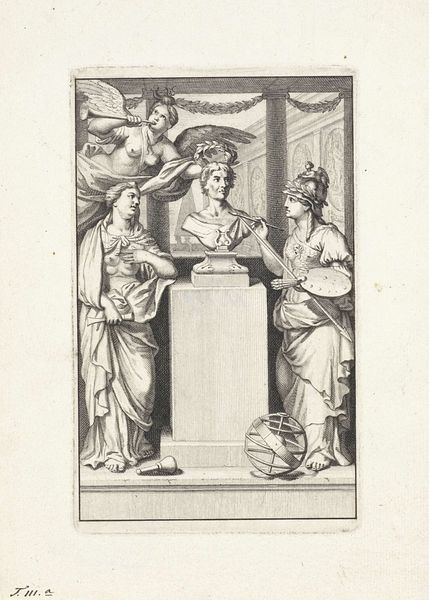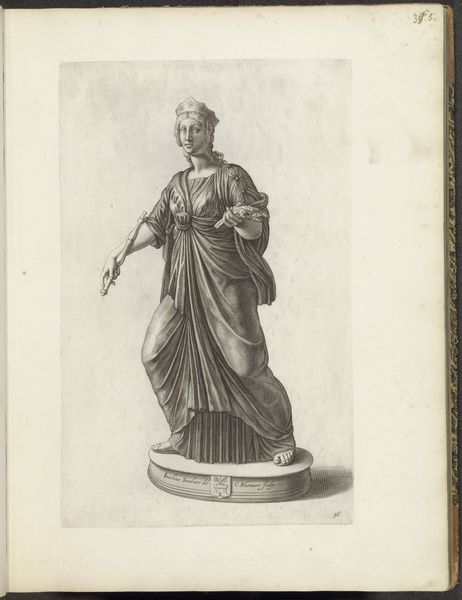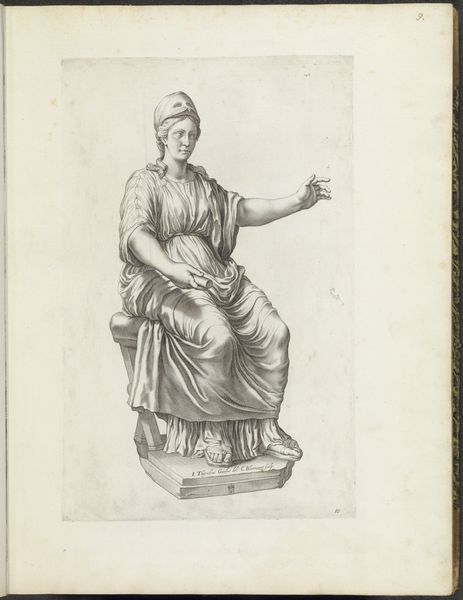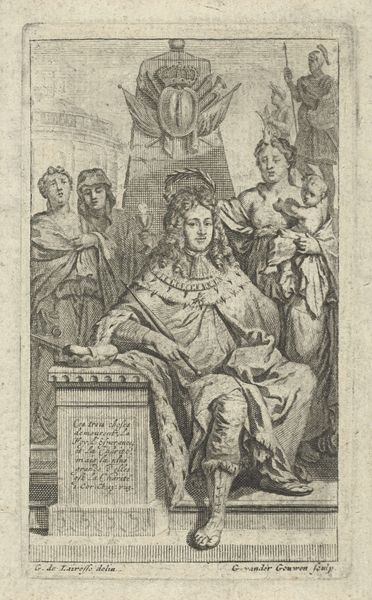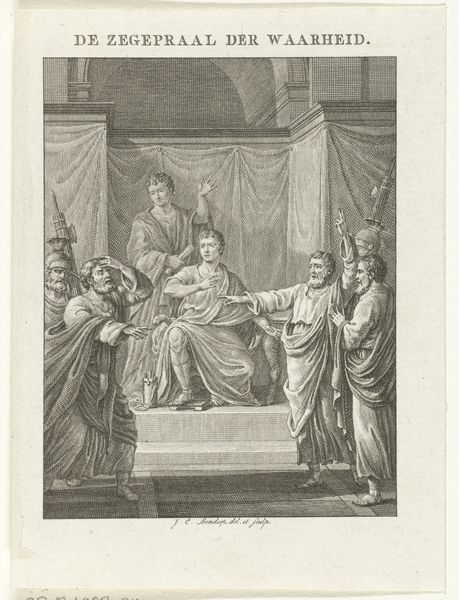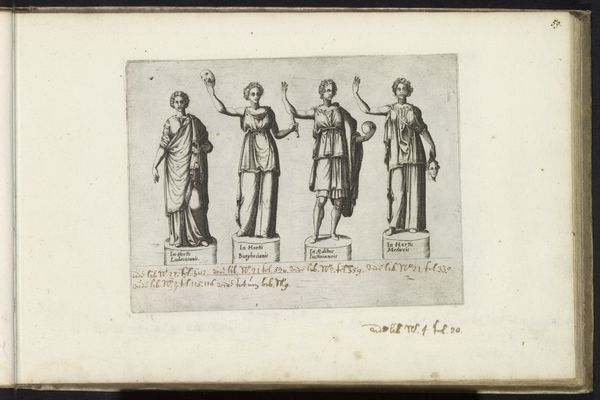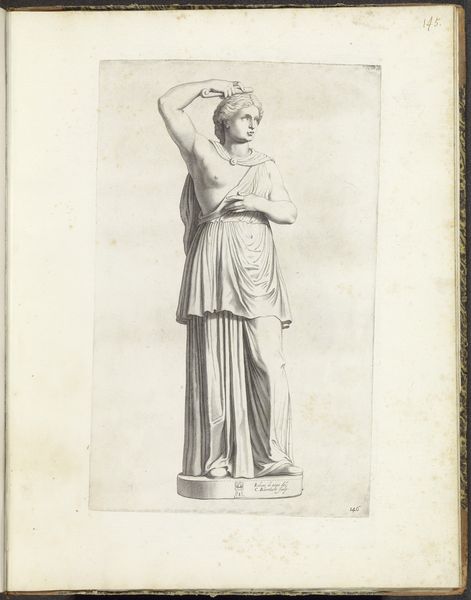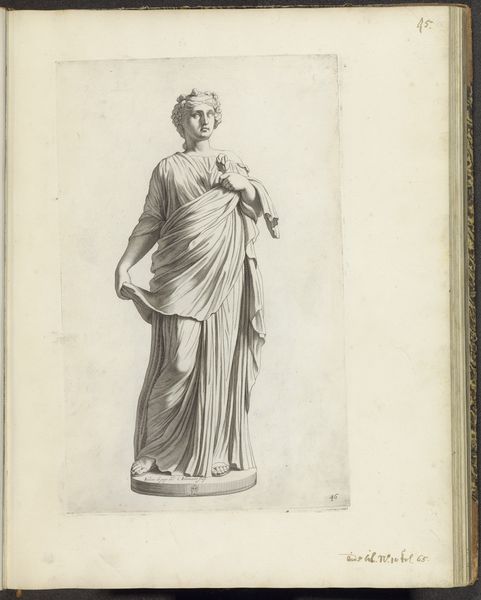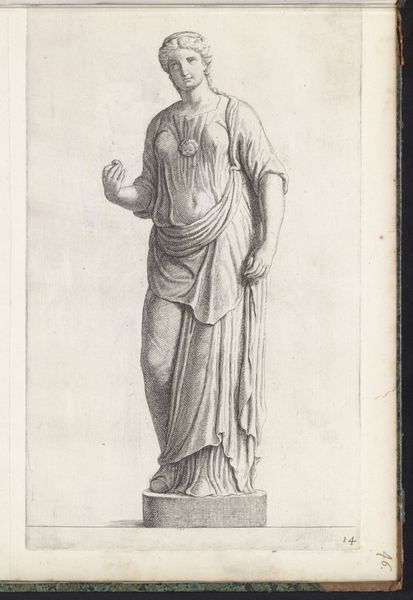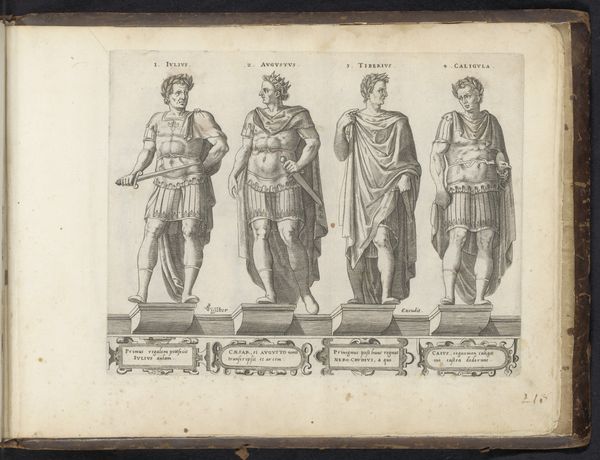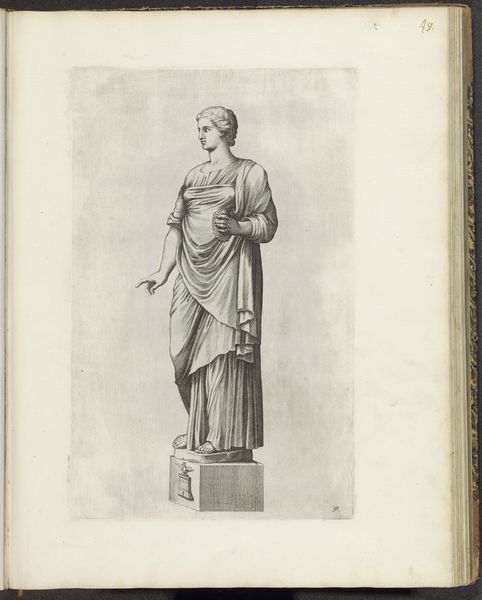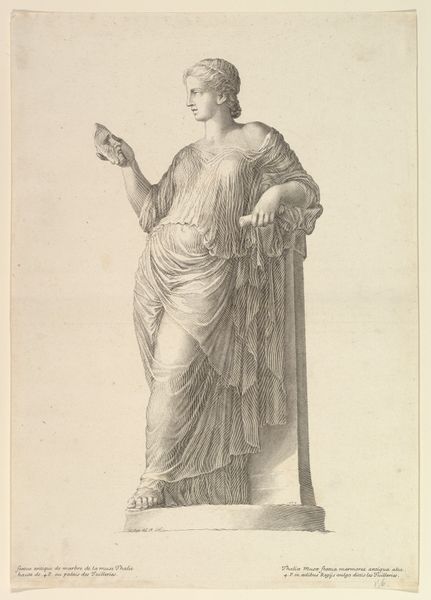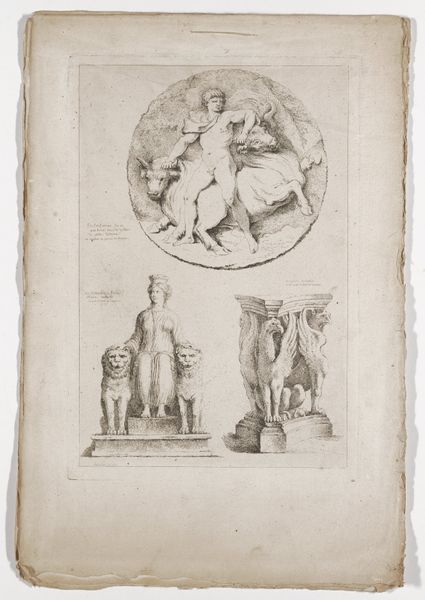
print, metal, engraving
# print
#
metal
#
classical-realism
#
figuration
#
pencil drawing
#
line
#
history-painting
#
italian-renaissance
#
engraving
Dimensions: height 440 mm, width 299 mm
Copyright: Rijks Museum: Open Domain
Editor: This engraving, "Triumphant Rome with two Barbarian Kings" by Nicolas Beatrizet, likely created between 1595 and 1622, strikes me as a rather formal and somewhat unsettling representation of power. What visual cues do you focus on when trying to interpret this piece? Curator: My eye is immediately drawn to the central figure of Roma, the personification of Rome, enthroned. Observe her helmet, the symbols of authority she holds. Her gaze is direct, unwavering. And what of the figures flanking her? What do they signify? Editor: They seem like defeated kings, almost presented as trophies. Their postures are slumped, their faces weary. They seem...subdued. Curator: Exactly. And look at the base of Roma’s throne. Notice the carved images. These aren’t just decorations; they're symbolic narratives. Consider the defeated Dacians—what stories of Roman conquest and dominance are being reinforced through their repeated depiction? What psychological effect does this visual language have? Editor: So, it’s not just about celebrating Rome but also about perpetuating a very specific image of power and the subjugation of others? A narrative that echoes throughout centuries of art and imagery? Curator: Precisely! This print isn't just a depiction of a historical moment; it’s an articulation of cultural memory, a visual reminder of Roman authority intended to resonate with viewers across time. And the very act of creating and disseminating this image serves to solidify this power. Editor: I see. It’s interesting how the symbols and their arrangement create a lasting, loaded message about cultural identity and conquest. I hadn't considered the long-term psychological impact. Curator: It’s in these symbolic details that we find a deeper understanding of the past and its continuing influence on the present.
Comments
No comments
Be the first to comment and join the conversation on the ultimate creative platform.
